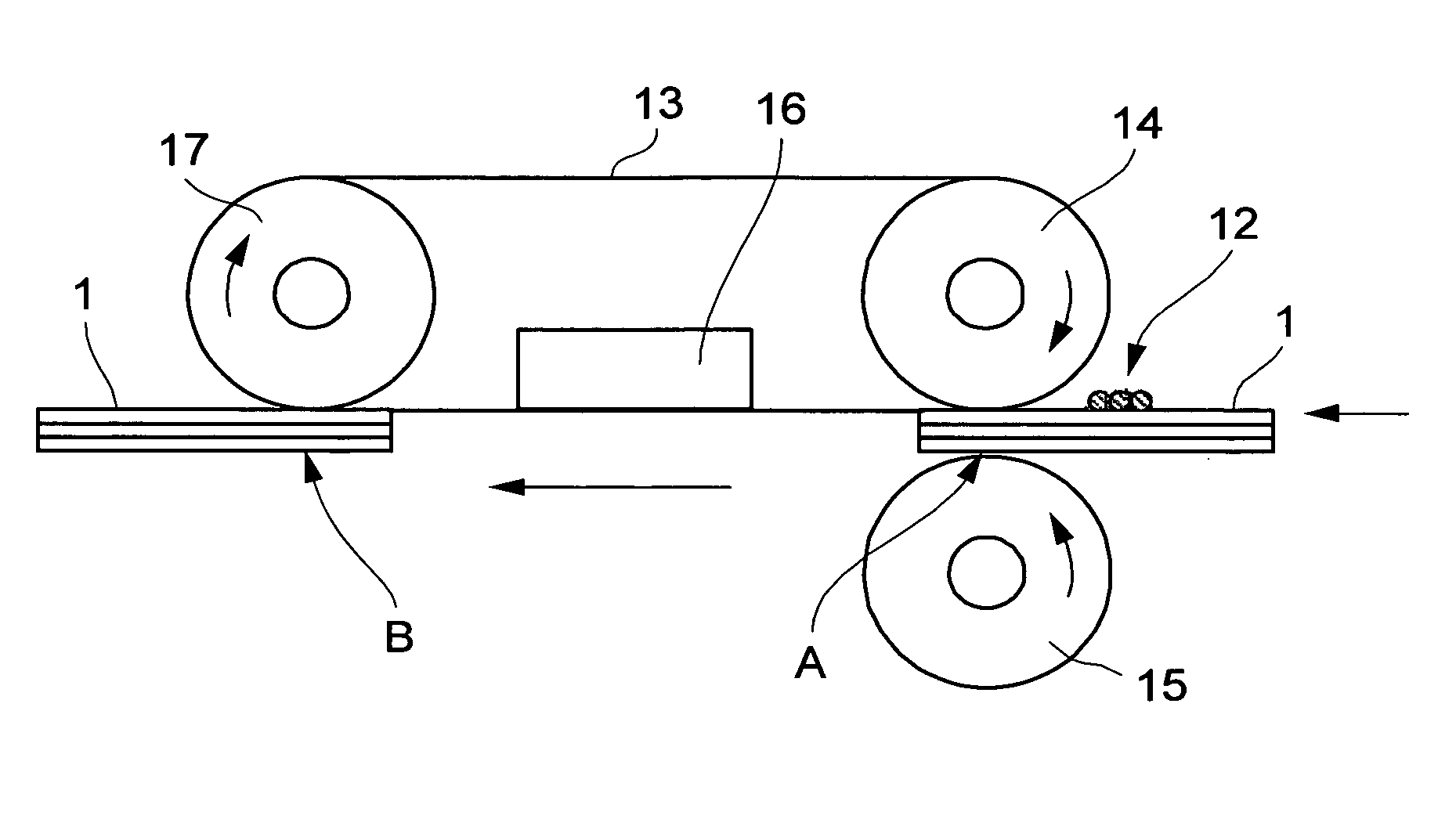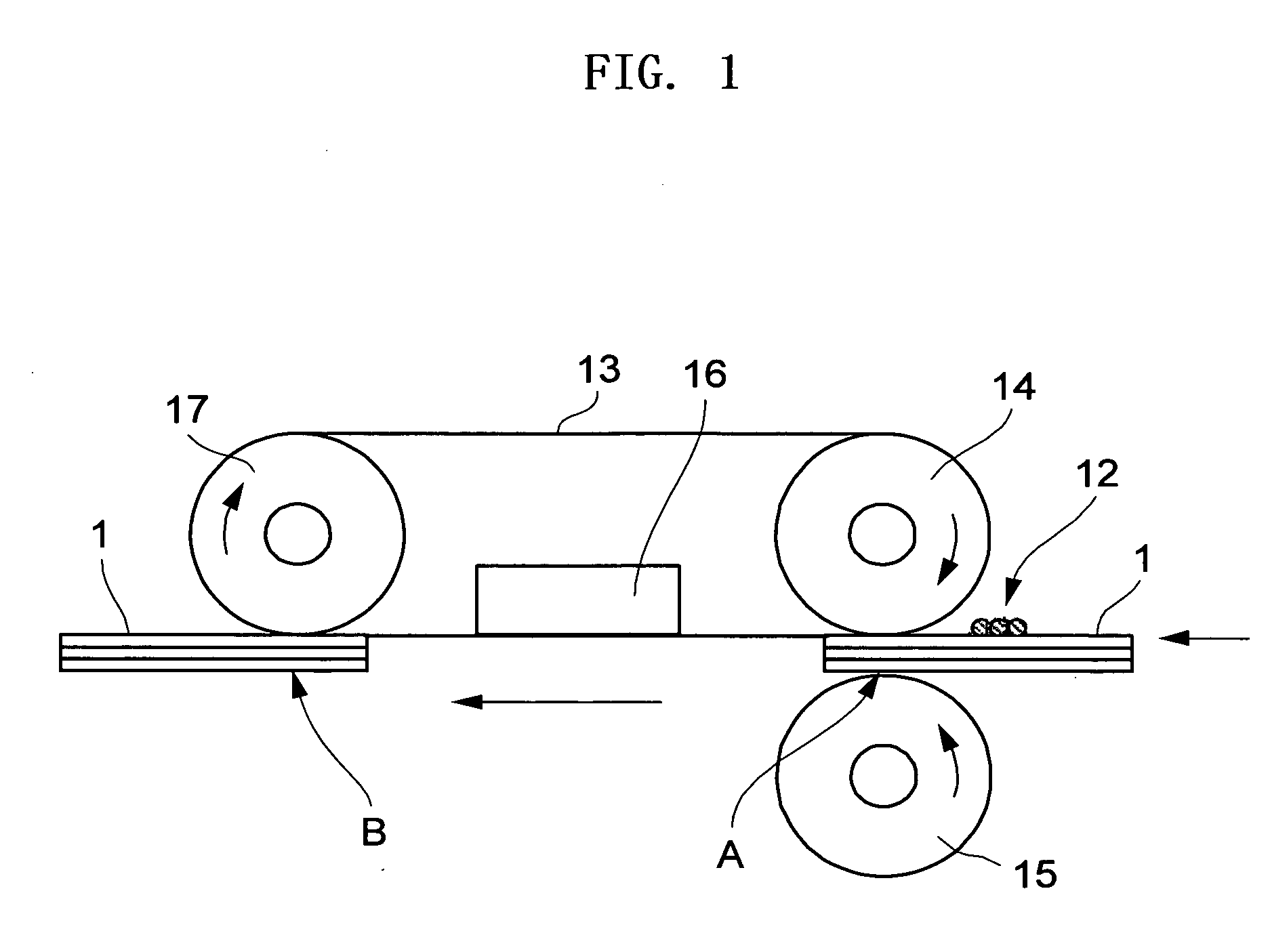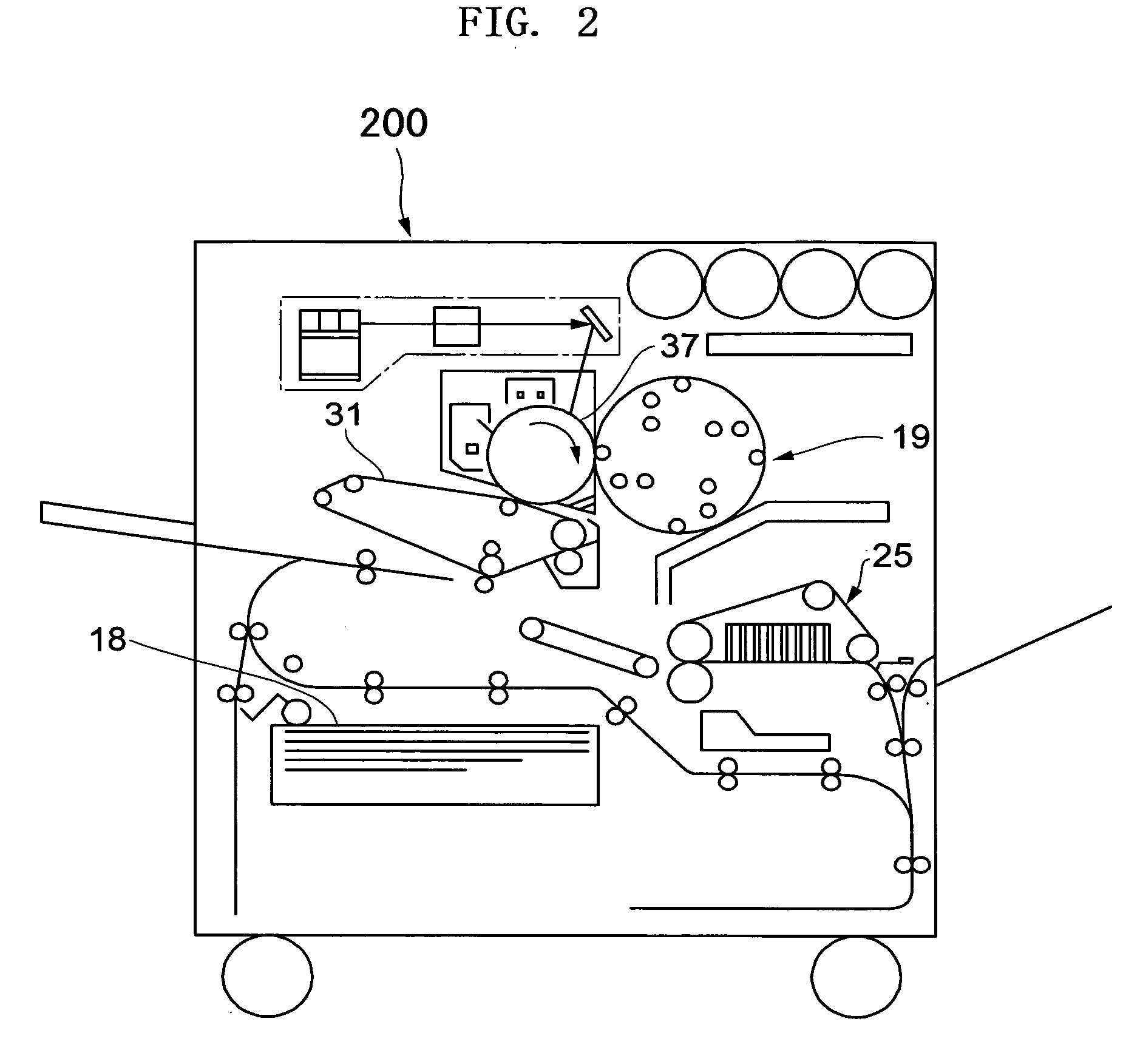Image-recording material, process for producing the same and process for forming image
a technology of image-recording material and film-forming process, which is applied in the field of image-recording material, can solve the problems of reducing product value, aforesaid objections have not been solved, and the stability of the coating liquid is likely to decrease, so as to prevent the flocculation of the coating liquid for the image-recording layer, improve film-forming performance, and improve stability
- Summary
- Abstract
- Description
- Claims
- Application Information
AI Technical Summary
Benefits of technology
Problems solved by technology
Method used
Image
Examples
example 1
Preparation of Raw Paper
A broadleaf kraft pulp (LBKP) was beaten to 300 ml (Canadian standard freeness, C.S.F.) by a disk refiner, and adjusted to a fiber length of 0.58 mm to prepare a pulp paper material. To the pulp paper material, 1.2% by mass of cationic starch, 0.5% by mass of alkyl ketene dimer (AKD), 0.3% by mass of anion polyacrylamide, 0.2% by mass of epoxidized fatty acid amide (EFA), and 0.3% by mass of Polyamide polyamine epichlorhydrin were added based on the mass of pulp.
Note: In the alkyl ketene dimer (AKD), the alkyl moiety is derived from fatty acids mainly containing behenic acid. In the epoxidized fatty acid amide (EFA), the fatty acid moiety is derived from fatty acids mainly containing behenic acid.
From the resulting pulp paper material, a raw paper of 150 g / m2 was prepared by means of a Fortlinear paper machine. In addition, 1.0 g / m2 of PVA (polyvinyl alcohol) and 0.8 g / m2 of CaCl2 were added on the way of drying in the Fortlinear paper machine by means...
example 2
The electrophotographic-image-receiving sheet of Example 2 was prepared in the same manner as Example 1, except that the following composition for toner-image-receiving layer was employed in place of that employed in Example 1.
Composition for Toner-Image-Receiving Layer
Water-dispersible polyester emulsion*1)100 gPolyethylene oxide*2) 17 gCarnauva wax*3) 10 gTitanium dioxide*4) 12 gWater550 g
*1)KZA-A464S, counter cation: ammonia, volume-average particle size: 129 nm, by UNITIKA Ltd.
*2)Alkox R1000, weight-average molecular weight: 300,000, by Meisei Chemical Works, Ltd.
*3)Serozol 524, by Chukyo Yushi Co.
*4)TIPAQUE ™ RA-220, by Ishihara Sangyo Kaisha, Ltd.
example 3
The electrophotographic-image-receiving sheet of Example 3 was prepared in the same manner as Example 1, except that the following composition for toner-image-receiving layer was employed in place of that employed in Example 1.
Composition for Toner-Image-Receiving LayerWater-dispersible polyester emulsion*1)100 gPolyethylene oxide*2) 17 gCarnauva wax*3) 10 gTitanium dioxide*4) 12 gWater550 g
*1)KZA-9294S, counter cation: ammonia, volume-average particle size: 135 nm, by UNITIKA Ltd.
*2)Alkox R1000, weight-average molecular weight: 300,000, by Meisei Chemical Works, Ltd.
*3)Serozol 524, by Chukyo Yushi Co.
*4)TIPAQUE ™ RA-220, by Ishihara Sangyo Kaisha, Ltd.
PUM
| Property | Measurement | Unit |
|---|---|---|
| volume-average particle size | aaaaa | aaaaa |
| volume-average particle size | aaaaa | aaaaa |
| volume-averaged particle size | aaaaa | aaaaa |
Abstract
Description
Claims
Application Information
 Login to View More
Login to View More - R&D
- Intellectual Property
- Life Sciences
- Materials
- Tech Scout
- Unparalleled Data Quality
- Higher Quality Content
- 60% Fewer Hallucinations
Browse by: Latest US Patents, China's latest patents, Technical Efficacy Thesaurus, Application Domain, Technology Topic, Popular Technical Reports.
© 2025 PatSnap. All rights reserved.Legal|Privacy policy|Modern Slavery Act Transparency Statement|Sitemap|About US| Contact US: help@patsnap.com



